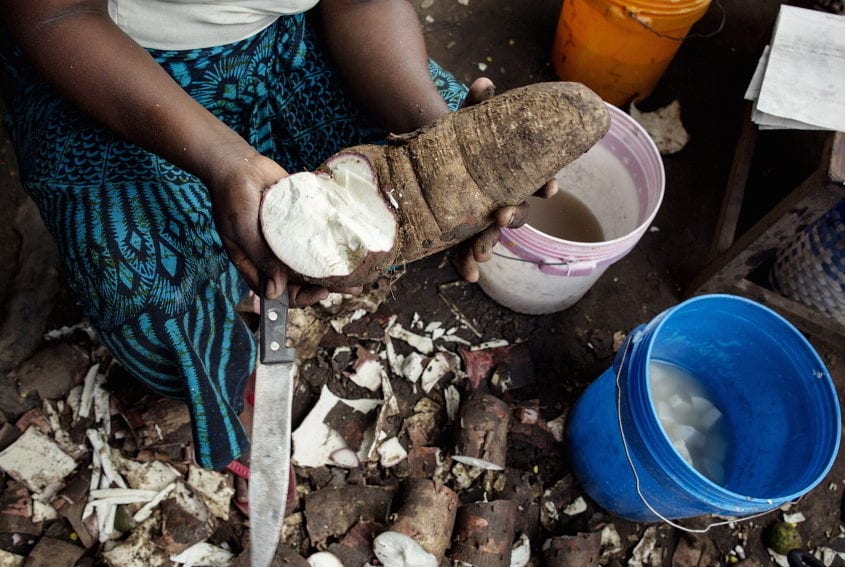Send to a friend
The details you provide on this page will not be used to send unsolicited email, and will not be sold to a 3rd party. See privacy policy.
[MANILA] Emerging pests and diseases are posing a threat to the sturdy cassava, a promising crop for developing nations as it can withstand drought and is resistant to climate change.
“Higher yields and productivity in cassavas will increase production and these in turn will attract important funds for further research and development.”
By Claude Fauquet, The Scripps Research Institute
Cassava “witches’ broom” (CWB) is one such systemic disease caused by phytoplasma, which are microscopic pathogenic agents. The disease causes a broom-like leaf proliferation at the top of the plant, reducing root starch content and crop yields. This is an issue as the starch content contains much of the crop’s value and thus directly affects farmers’ incomes.
All throughout South-East Asia, CWB has become a problem, which was taken up at the recent World Congress on Root and Tuber Crops (WCRTC) in Nanning, China (18-22 January).
“To combat CWB, it is crucial to halt the arrival and spread of pest invaders by bolstering biosecurity measures, creating early warning systems through cost-efficient surveillance schemes, cleaning the seed systems and offering ICT-based farmer educational programmes,” Kris Wyckhuys, an entomologist at the International Center for Tropical Agriculture (CIAT), explained at the congress.
Through free-access online learning videos, available in seven different languages, farmers learn about preventive tactics, including healthy planting material, field sanitation and stake treatments to avoid CWB.
Wyckhuys says that strengthened ASEAN regional collaboration is essential to achieve improved crop health. This includes developing a cassava variety resistant to the disease, although this is both costly and time consuming and requires substantial investments that are currently lacking.
But developing new varieties has been proven effective. In Thailand and Vietnam, 60 to 75 per cent of cassava farmers already grow the highly productive cassava variety Kasetsart 50 (KU 50), developed by Reinhardt Howeler, a retired CIAT soil scientist, and Chareinsuk Rojanaridpiched, retired senior cassava breeder at the Faculty of Agriculture, Kasetsart University in Thailand.
KU 50 is the world’s most widely grown cassava variety. It is cultivated on more than one million hectares in Thailand and Vietnam, as well as in large areas of Cambodia, Indonesia, Laos and the Philippines. KU 50 has high starch content with good germination, wide adaptation and high root yield. It provides farmers with a larger and more secure harvest and thus a higher income.
Howeler and Rojanaridpiched received the Golden Cassava Award at the WCRTC last January for their achievement in developing KU 50.
Feeding more than half a billion people worldwide, cassava is a carbohydrate source that is considered a staple crop in Asia, Africa and South America and an important food security component for the growing population of developing nations.
Claude Fauquet, director of the International Laboratory for Tropical Agricultural Biotechnology at The Scripps Research Institute and co-founder of the Global Cassava Partnership for the 21st Century, sees the bigger picture of ensuring crop health in cassavas.
“Higher yields and productivity in cassavas will increase production and these in turn will attract important funds for further research and development by assuring investors a return in business,” Fauquet says.
This piece was produced by SciDev.Net’s South-East Asia & Pacific desk.














